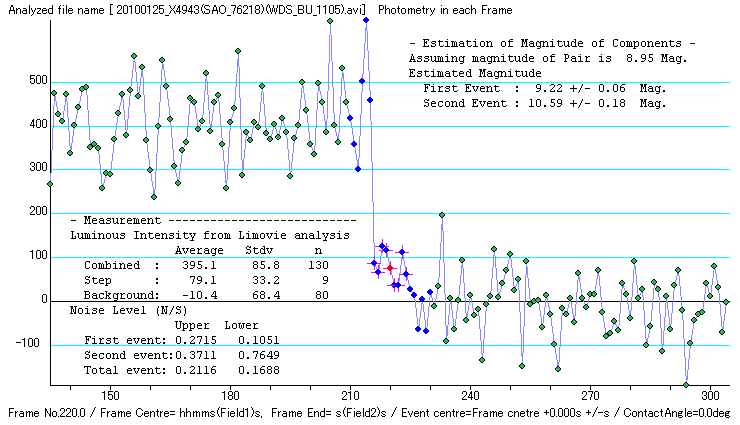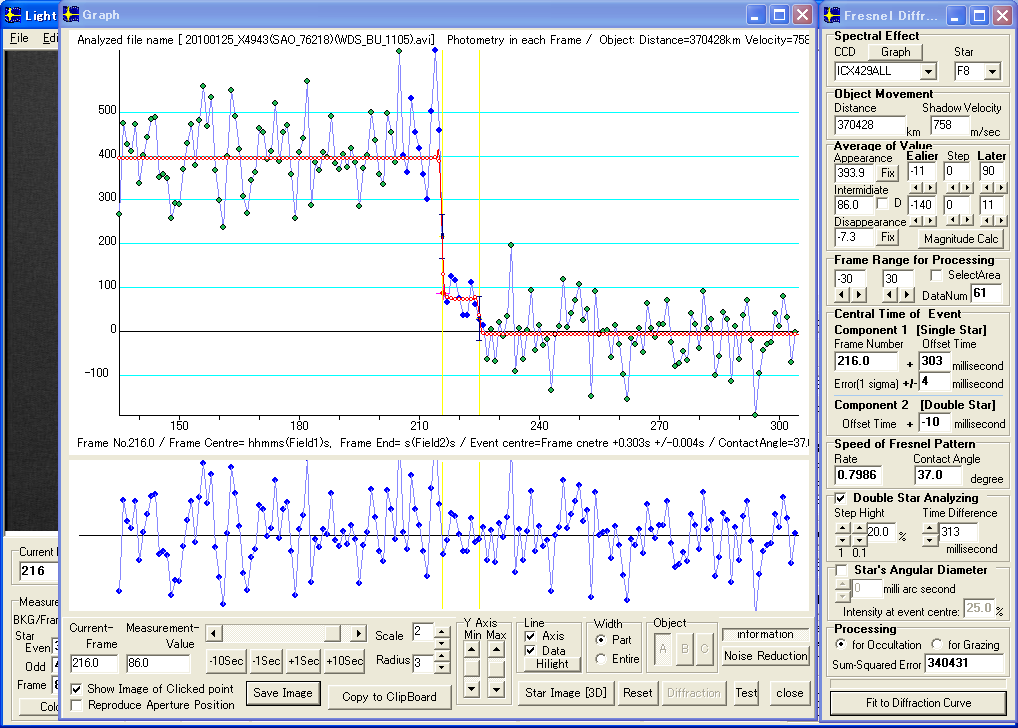Observation and analysis of SAO76218 on Jan. 25, 2010 (UTC)
Dec. 4, 2010
Kazuhisa Miyashita
The detail of SAO76218 is as follows.
Catalogue details
XZ 4943 = SAO 76218
RA = 3 48 34.8070 PM = 0.00147s
Dec = 24 10 52.280 PM = -0.0447"
Mv = 8.95, Mb = 9.36, Mr = 8.74 Spectrum F8 Dia: .0001" [CHARM/CADARS, 1 measures]
Star is the primary of the following pair
Name Cmpt Yr1 Yr2: PA1 PA2 : Sep1 Sep2 : Mag1 Mag2: #1 #2 mean
BU 1105 1889 1978: 58.0 235.0: 0.300 0.200: 9.30 10.40: S 76218 ------
WDS Discoverer codes
BU Burnham, S.W.
|
|---|
The occultation event of this star was observed by three Japanese observers on Jan. 25, 2010.
Separation and position angle between component A and B is obtained from these observations. And the magnitude difference is also estimated.
Double star solution by IOTA coordinator
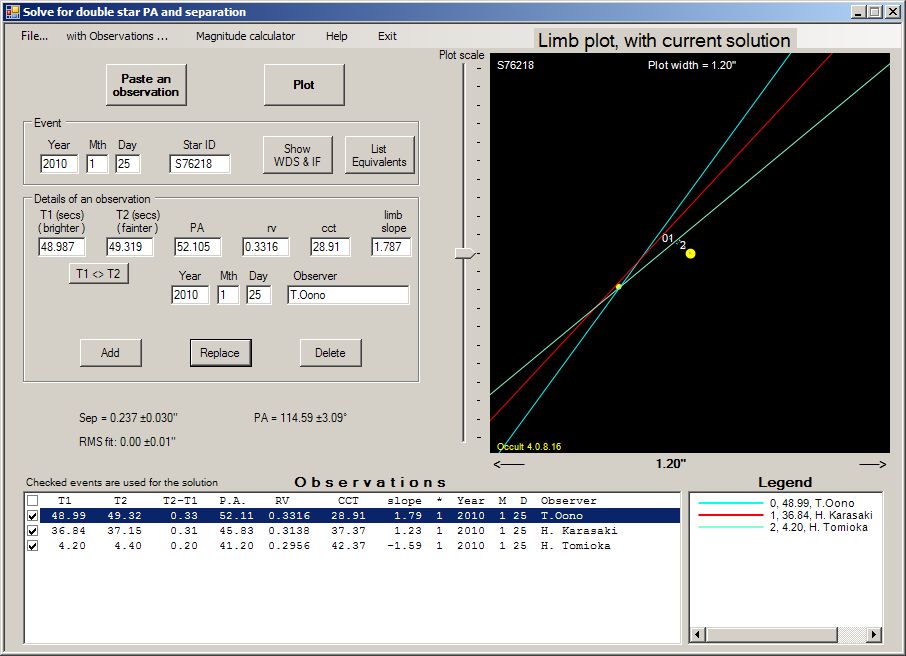
Comment from Brian Loader (double star coordinator).
There are now three observations. for S 76218 so I have obtained a solution:
Separation 0.237"+/-0.030" PA 114.59+/-3.09deg.
This compares with the predicted 0.16" and 298.8deg.
Clearly the predicted PA is out by 180 degrees.
The magnitudes from Oono's and Karasaki's observations are fairly close to each other,
but Tomioka's magnitudes differ somewhat.
The last point of his step looks high, I suspect that removing it would reduce the difference, but not remove it.
Photometry
Assuming magnitude of Pair is 8.95 Mag.
Observer Oono Karasaki Tomioka Catalogue
Brighter star 9.29 +/- 0.03 9.22 +/- 0.06 9.55 +/- 0.18 9.30
Fainter star 10.38 +/- 0.07 10.59 +/- 0.18 9.89 +/- 0.24 10.40
|
|---|
The magnitude difference derived from Oono and Karasaki's observation are very close to the value of WDS catalogue.
Tomioka's camera which has automatic gamma correction reduced the difference of measutement value between two stars.
Light curve and explanation
i) Oono's observation
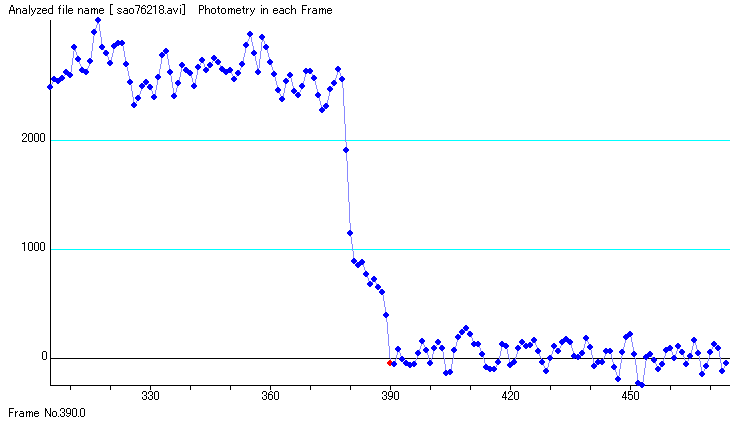
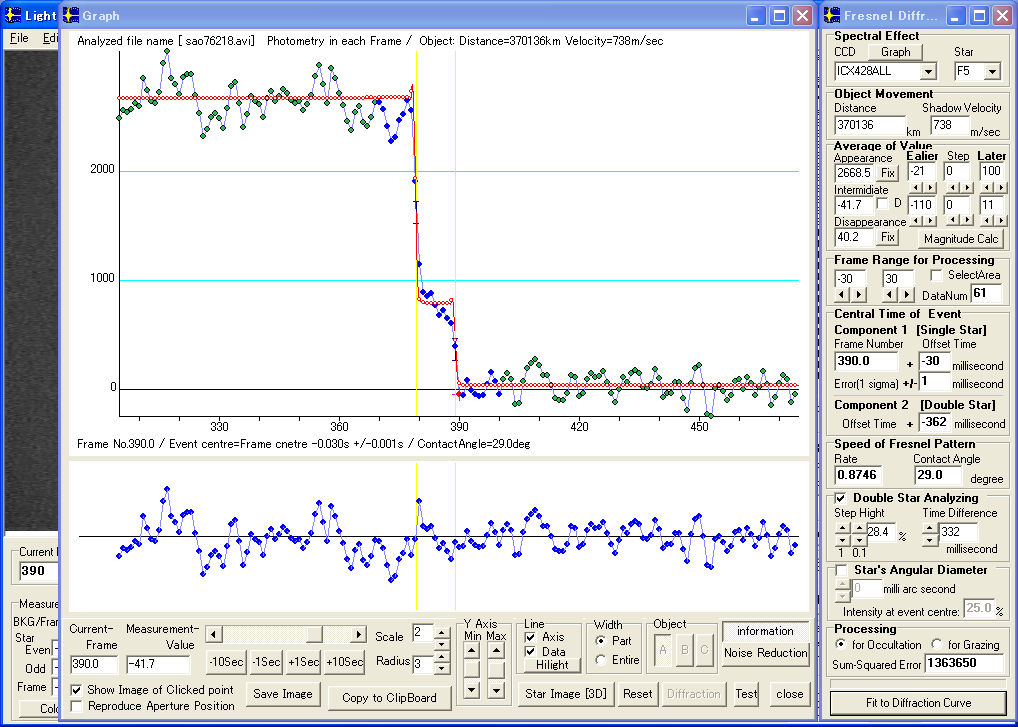
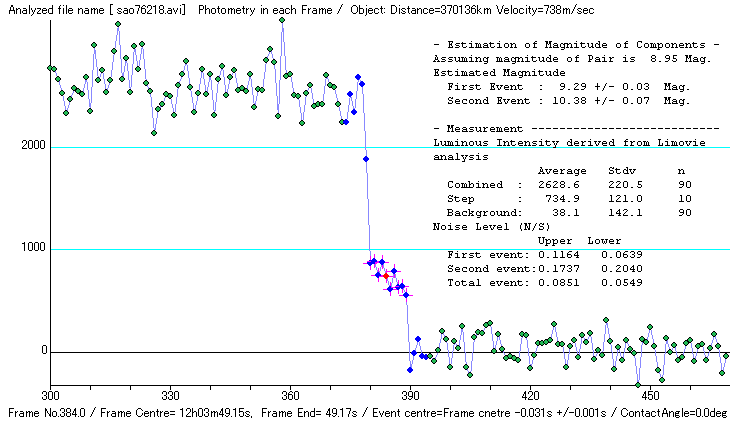
It has clear step, but the luminous intensity slowly decreases during the step.
ii) Tomioka's observation
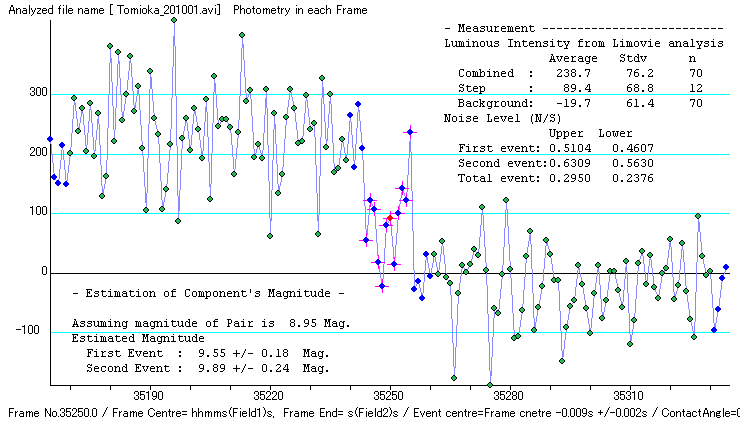
iii) Karasaki's observation

